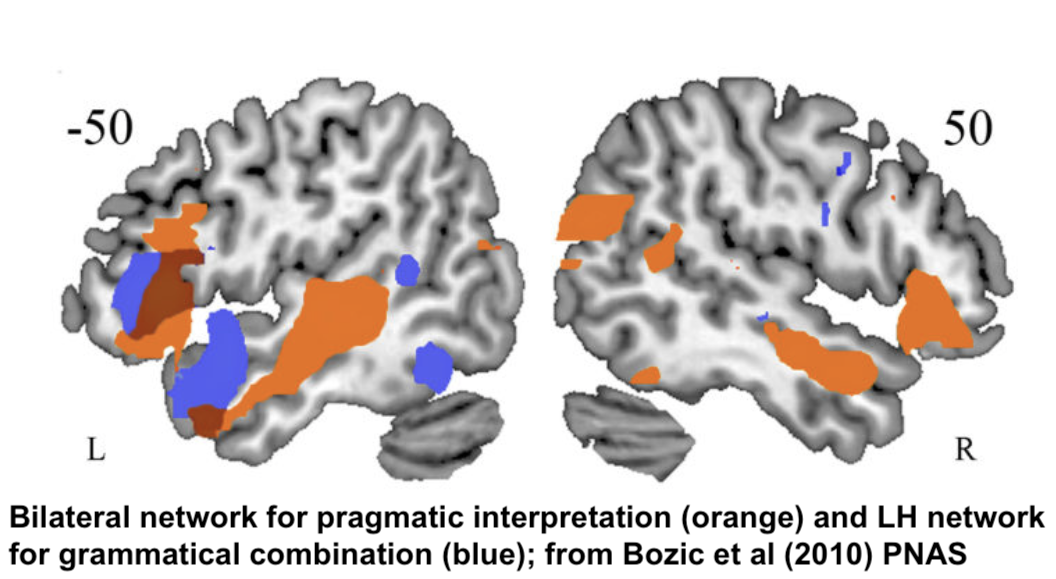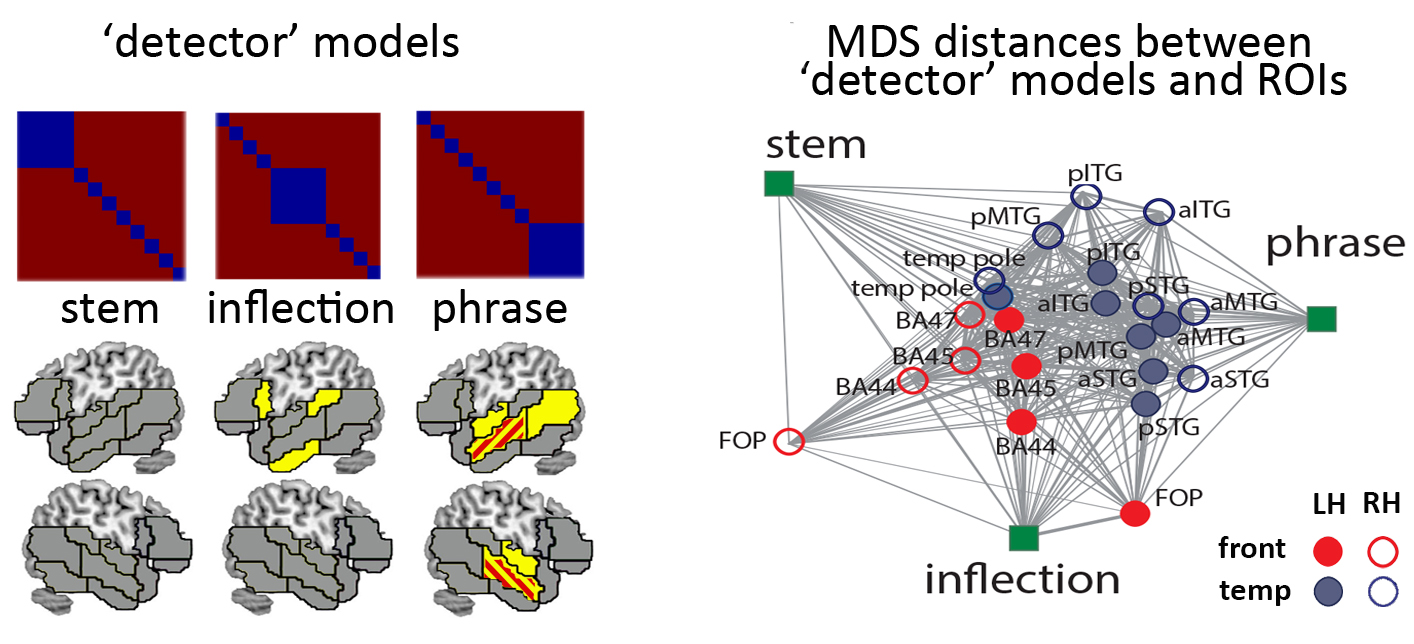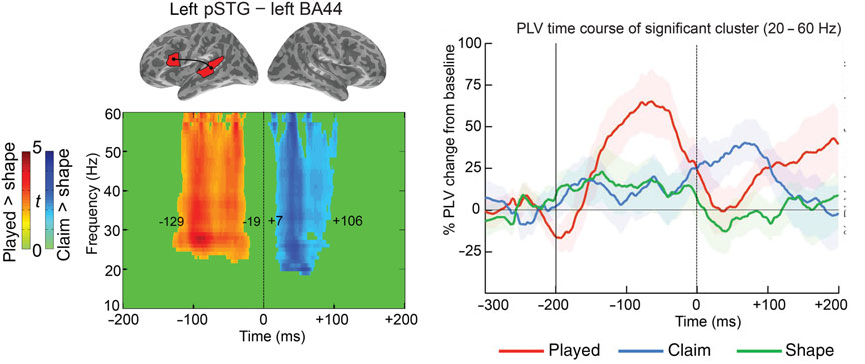| HOME | PEOPLE | RESEARCH | PUBLICATIONS | CONTACTS |
Research
Language is a uniquely human communication device, which allows us to express an infinite number of messages and ideas. We learn and use language effortlessly, but this masks an extraordinary complexity of mechanisms that enable this to happen.
We are interested in understanding how this powerful communication system is supported in the mind and brain. One of our research strands focuses on the neural mechanisms that support spoken language comprehension. Using neuroimaging and behavioural techniques, we investigate how different properties of the speech input engage the underlying neural architecture to produce successful comprehension.
Dual Neurobiological Systems (DNS) account
Our work has shown that speech information interfaces with two joint but distinct processing systems: a left lateralised (LH) fronto-temporal brain network that supports complex grammatical combination, and a broad bilateral network (whose functional properties are traced back to nonhuman primates) that supports semantic and pragmatic interpretation of the incoming utterance (Bozic et al, 2010; Marslen-Wilson, Bozic & Tyler, 2014). The possible evolutionary context for this Dual Neurobiological Systems (DNS) hypothesis has been discussed in Marslen-Wilson and Bozic (2018).
This basic organisation of the language-processing network is also supported by cross-linguistic evidence. Working in different languages, we showed that only grammatical complexity consistently activates the LH fronto-temporal network (English: Bozic et al, 2010; 2015; Polish: Szlachta et al, 2012; Bozic et al, 2013; Italian: Carota et al, 2016; Russian: Klimovich-Gray et al, 2017). On the other hand, the bilateral processing network seems to have extensive processing capacities: in addition to supporting the mapping of sound to meaning for simple words such as dog, it also supports the processing of perceptually complex words like claim (which have another word, clay, embedded in them; Bozic et al, 2010), derivationally complex words (warmth, archer; Bozic et al, 2013), as well as simple syntactic structures like ‘I sing’ or ‘the cat’ (Bozic et al, 2015).
Multivariate RSA results showing dissociation between the functional properties of the left-lateralised and the bilateral processing networks; from Bozic et al (2015)
The two networks integrate their processing via synchronised neural oscillations in real time, with the most prominent oscillations for grammatical combination triggered in the gamma band (20–60 Hz; Fonteneau, Bozic and Marslen-Wilson, 2015).
Bilingualism
The other major strand of our research is bilingualism. We are interested in understanding the cognitive and the neural consequences of the ability to learn and use two (or more) languages - a question of considerable importance in the increasingly multilingual world.
To do so we are testing the neuroplastic adaptations in response to the demands of learning and using multiple languages. Specifically, we have been examining the neural encoding of attended and unattended naturalistic speech in early and late bilinguals (both adults and children), and comparing this to attentional encoding in monolingual speakers. Our work in monolinguals has established that the neural encoding of attended speech varies as a function of interference (Olguin et al, 2018). However results from bilinguals show a pronounced modulation of these neural mechanisms, and also suggest that they are further fine-tuned by the typological similarity of bilingual’s languages (Olguin et al, 2019). Importantly, this holds even in the absence of behavioural differences between monolinguals and bilinguals, implying that the aim of these neurocognitive modulations in bilinguals is to support optimal behavioural performance under the increased processing demands of bilingualism. Such findings underline that learning and using multiple languages represents a major cognitive demand, which triggers neuroplastic adaptation of our processing system.
The neurocognitive consequences of bilingualism are controversial, and this topic has received substantial attention in the scientific literature and the popular media. See below for some thoughts of the questions raised in this debate
Interview with the British Council
Interview in El Pais (in Spanish)




